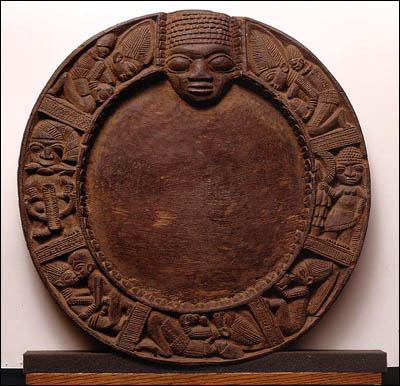
Masks of Black Africa
Ladislas Segy
Dower
1976
a22. 0508. Com 248 pag.Frontispiece, map, 264 photographs, bibliography. Publisher series: Dover Books on Anthropology and Ethnology. Locale: Africa. (Folklore, Anthropology, Ethnology, Masks)
Importante livro sobre a arte africana Segy autor de outros livros e numerosos textos sobre o assunto. Psicologia da máscara, a dança, estilo do entalhador e sua importância social. Uma importante iconografia organizada por tribo. 247 fografias de máscaras, identificada por tribo, lugar, uso ritual. Dogon, Senufo, muitos outros.
The African masking traditions of this part of the World are extremely fertile and varied. The traditions supporting the masks are generally associated with the spirits of ancestors, rites of passage, fertility and initiation ceremonies. Dance is generally involved in the use of the masks. Segy lists the following types of ritual:-
Rituals of cosmology, myth and mythological heroes or animals
Fertility rites
Rituals for increase
Agricultural festivals
Rituals for rites of passage
Ancestor cults
Initiations including secret societies
Related Ceremonies
Masks can be used for different ceremonies often having multiple purposes. The size and style of masks are diverse, depicting animals, human faces and more abstract styles in sizes from a few centimetres to 4.5 metres in the case of the Dogon Iminana ( mother mask ). With only a few exceptions the masks are all part of a full costume and not just an isolated piece of decoration..
Segy notes:-
Face coverings
Helmet masks
Headdresses Masks with prominent breasts
Amulets
Insignia of grade
Crowns of bead work
Materials
Wood The major material was wood due to the large forest and range of species available. The choosing of a tree from which to make a mask was not as we might do today, find one and chop it down. Rather the carver would seek the help of a diviner and undergo a purification ceremony and when the first blow was struck he would drink some of the sap in order to form a brotherhood with the tree's spirit. Mask would be carved from one piece of wood with nothing jointed, with some of the masks this created severe technical difficulties when the early carvers only had simple tools.
Usually green timber was used as this was easier to cut. Certain vvarieties would be used for some special masks, but in general the softer woods were used
Ivory was used by the Warega and Benin. The ivory was the property of the Benin kings (Oba) and they were the only ones to wear ivory as a mark of office. The carving of the Warega was not as refined but has a strong impact.
Brass was used by the Benin, Senufo and Ashanti.
Other Materials Knitted materials were used as were beadwork, basketry and fabrics.
Additional materials included :- shells, beads, twigs, bark, teeth, hair, beaten or repousse metal, vegetable fibres and skin, to mention a few.
West Africa
The masks of this area are well documented by Ladislas Segy in Masks of Black Africa. His book lists the following areas:-
Guinea-Bissau
Republic of Guinea
Sierra Leone
Mali
Liberia
Ivory Coast Upper
Volta
Ghana
Nigeria Cameroon
Within each of these countries can be found ancient traditions associated with individual tribes displaying common links. The areas associated with some groups cross boundaries. The names of the different tribes is too extensive to list at the moment.
Equatorial Africa
Congo Zaire Zambia
Similar themes and traditions are found with the masks from this area when compared with those of the Western countries. In the early Fifteenth Century the well established Kongo people had close contact with the Portuguese and later some converted to Christianity. This has had some influence on the type of festivities and masks. The Kongo dominated various tribes in the area of these the Woyo and Yombe produced notable mask The Ndunga masks of the Woyo were larger than life size and had projecting foreheads large cheeks with small eyes, the surface of these faces was painted with white or brightly coloured asymmetrical designs.
The Western Pende on the Kwilu River in Zaire have two major types of mask. The Minhajl, which represent the ancestors and the Mbuya which represent various village characters such as the fool, the prostitute, the chief etc. These masks are used in the reinforcement of socialcontrol. The amusing performances are brightened by the triangular faces of the masks with bulging eyes, open mouths containing carved teeth painted in a variety of colours. The more powerful Minganji masks are simpler circular forms made from raffia with tubular eyes and no other features. All the masks are constructed in secret away from the village.
In the Makenda circumcision ceremony the Mbuya appear from out of the bush and dance in the village square until dusk. As the sky darkens, Minganji, masked dancers, materialise and move around the village at a distance, helping to develop the sense of awe and unease. In the secret circumcision camp the initiated youths are allowed to handle the mask as they are now fully fledged members of the society.
Many other styles are found in these areas.
East Africa
Tanzania and Mozambique are both home to the Mekonde one of the best know tribe of mask makers in East Africa. The Mekonde masks come in various styles, the southern groups using the helmet type. The features of these masks are often realistic and are worn with a cloth covering the head of the dancer. Scarification is used. The characters represented are familiar to the local people:- the old man, the doctor, the young woman and the Arab, some animal masks are found.
CASO HAJA INTERESSE NESSE LIVRO OU EM NOSSO SERVIÇO, ENVIE UM E-MAIL PARA philolibrorum@yahoo.com.br , que conversaremos sobre como conseguir.
PHILOLIBRORUM-BIBLIOAFRO cultura griot...

Nenhum comentário:
Postar um comentário